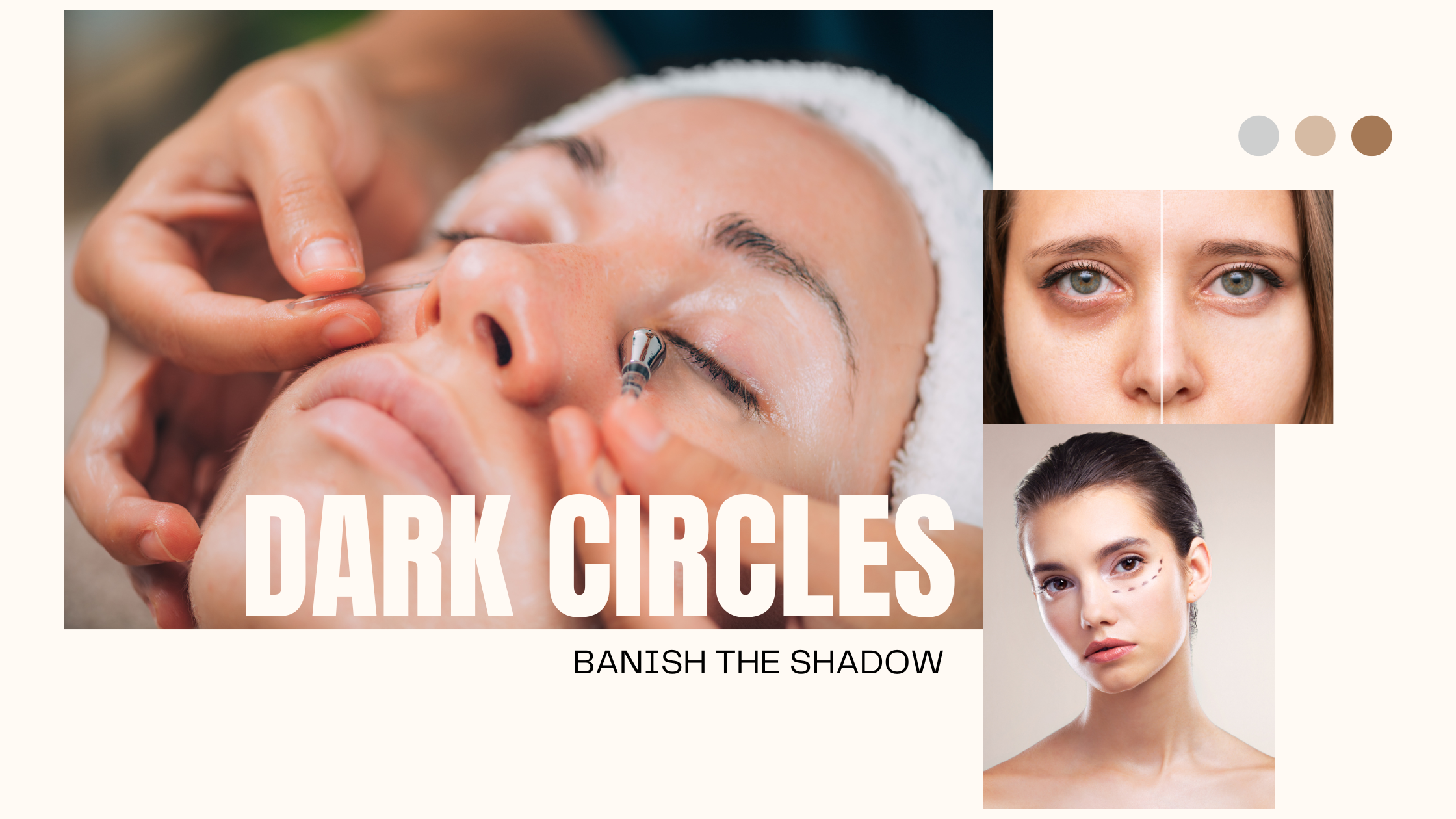Dark circles under the eyes, a common cosmetic concern, affect individuals of all ages, genders, and races. Although dark circles aren't medically serious, they can have a significant impact on a person’s appearance and self-esteem. Defined as bilateral, round, and homogenous pigment macules located in the infraorbital regions, dark circles can make individuals look tired, sad, or even older than they are. Despite their prevalence, the exact causes of dark circles are complex and varied.
What Causes Dark Circles?
- Dermal Melanin Deposition: One major factor contributing to dark circles is the deposition of melanin in the skin around the eyes. Studies have shown that in certain populations, like Japanese individuals, this melanin deposition can result in a kind of dermal melanocytosis, a condition where melanin pigments are deposited deep in the skin. This deposition leads to the darkening of the skin, exacerbating the appearance of dark circles.
- Postinflammatory Hyperpigmentation: Another contributing factor is postinflammatory hyperpigmentation caused by conditions like atopic or allergic contact dermatitis. Individuals who suffer from these conditions may experience dark circles as a result of persistent rubbing, scratching, or the accumulation of fluid around the eyes due to allergic reactions.
- Periorbital Edema: The skin around the eyes is prone to fluid retention, which can lead to puffiness and contribute to dark circles. Factors like high salt intake, fatigue, or systemic conditions can result in fluid accumulation, giving the eyes a swollen appearance that casts shadows and darkens the under-eye area.
- Superficial Location of Blood Vessels: As we age, we naturally lose subcutaneous fat, especially in the periorbital region. This loss of fat and the thinning of the skin can reveal the underlying blood vessels, giving the skin a bluish or dark hue.
- Tear Trough Depression: The tear trough is a depression that forms at the junction between the lower eyelid and the cheek. This hollowing effect, often exacerbated by age-related loss of fat and skin elasticity, can create shadowing, which contributes to the appearance of dark circles.
- Fatigue and Lack of Sleep: It is well known that fatigue, particularly due to lack of sleep, can exacerbate the appearance of dark circles. This daily fluctuation in intensity is often linked to an individual's overall health and energy levels, making dark circles more pronounced during periods of stress or tiredness.
Ethnic and Hereditary Factors
Dark circles are more pronounced in certain ethnic groups, particularly those with darker skin tones, where increased melanin production can result in hyperpigmentation. Additionally, dark circles often run in families, suggesting a genetic component. The presence of dark circles in multiple members of the same family raises the possibility of inherited anatomical or histological characteristics that predispose individuals to this condition.
Treatments for Dark Circles
The treatment of dark circles is challenging due to the multifactorial nature of their causes. Several treatments have been proposed, ranging from topical creams to more invasive procedures:
- Topical Treatments: Common topical treatments include bleaching creams and retinoic acid. While these can help lighten pigmentation, their effectiveness varies, and evidence-based studies supporting their use are limited.
- Laser Therapy: Laser treatments, particularly CO2 and Q-switched lasers, have gained popularity in recent years. These lasers target the pigmented skin, helping to improve the appearance of dark circles by tightening the skin, reducing melanin deposition, and improving skin texture.
- Chemical Peels: Deep-depth chemical peels, often used in conjunction with other treatments like blepharoplasty (eyelid surgery), can be effective in treating hyperpigmentation and improving skin texture around the eyes.
- Hyaluronic Acid Fillers: For those with tear trough depression, hyaluronic acid fillers can help restore volume to the under-eye area, reducing the hollow appearance that contributes to dark circles. This non-invasive procedure has shown promising results in clinical practice.
- Surgical Options: In cases where dark circles are caused by significant fat displacement or skin laxity, surgical procedures such as fat repositioning, fat extrusion, or septal reset can be considered. These procedures help lift and rejuvenate the under-eye area, reducing the shadowing that creates dark circles.
Conclusion
Despite the prevalence and cosmetic significance of dark circles, research on their causes and treatments remains limited. Dermatologists and researchers need to focus on understanding the underlying anatomical and physiological factors that contribute to dark circles to provide more effective treatment options. Identifying the specific causes in each patient is key to tailoring treatments and improving outcomes. For now, a combination of topical treatments, laser therapy, fillers, and, in some cases, surgery, remains the most comprehensive approach to managing dark circles.
Understanding the multifaceted nature of dark circles and seeking appropriate treatment can help individuals achieve a fresher, more youthful appearance, enhancing their confidence and overall quality of life.

